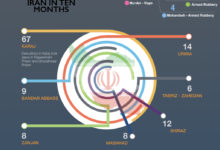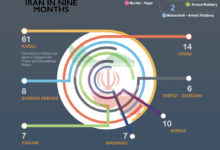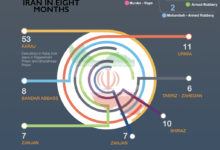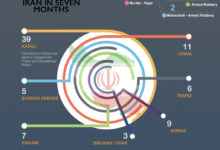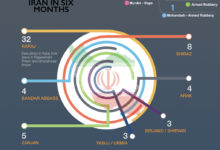Infographic: Capital Punishment in Iran – 2015
IHRDC’s final update of its chart of executions carried out by the Iranian government in 2015 counts 966 executions, an increase of nearly 34% from the previous year. The infographic below highlights some of the details behind these numbers, including the charges leading to the death sentences of the individuals in question, the eight top cities for executions in the last year, and trends in overall executions and the executions of juvenile offenders over the last year. Iran has led the world in executions per capita for years.
Among these 966 executions, 625—nearly two thirds—arose from drug trafficking charges. This represents a rise of over 75% in executions for this charge over the previous year. The International Covenant on Civil and Political Rights (ICCPR) establishes that the death penalty may only be used for “the most serious crimes”, and international legal experts have long averred that drug-related offenses do not fit in this category. Iranian law envisions the use of capital punishment for a wide variety of crimes, including armed robbery, drug trafficking, fraud, and sodomy.
These executions took place in a highly problematic judicial context. There have been hundreds of reports of violations of due process in Iran in recent years, including the denial of access to counsel, the denial of the right to be heard by a fair, independent, and impartial judicial body, and a routine reliance on confessions extracted under physical and psychological duress as primary forms of evidence in capital cases.






